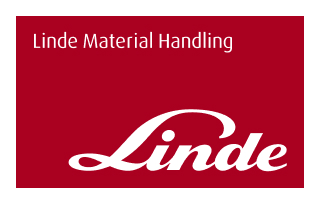- Blog
- General


Welcome to part two of our three part series explaining the technology behind Linde lithium-ion battery systems. There are many advantages to this user-friendly technology when compared to lead-acid battery systems including quicker recharging times, up to 30% more energy efficiency and no loss of performance even when the battery level decreases. Read on for more of a breakdown of this energy system and the many benefits it provides — also, incase you missed it, you can find the first 16 FAQs covered off in part one of our series here.
In our Performance Plus range, yes!
Based on commitments with our suppliers and internal lifetime tests, the nominal lifetime of the Linde Li-ION batteries are:
Yes, if there are sufficient opportunities to charge the batteries. One of the biggest benefits you can get from a Li-ION battery is that they never require an 'equalise' charge, so regular small charges will keep them going as effectively as a big overnight charge would.
This depends on the following criteria:
Yes, but it always depends on the application. The ambient conditions (i.e. humidity and temperature ratings) of the trucks, batteries and chargers need to be respected, to keep the truck performance up (close to that at room temperature) and potential increases in changing times still reasonably small. See temperature chart below, and always refer to your equipments user manuals. These values are for reference based on ambient temperatures and provide a conservative estimate.
When using trucks inside a cold store Li-ION technology is ideal thanks to its high power delivery and very small loss of usable energy content at low temperatures.
When charging Li-ION inside a cold store, this can be a bit more challenging but very achievable thanks to our excellent cell quality:
No, lithium-ion batteries are just as safe as lead-acid batteries if handled properly. As the very high energy density poses a risk, lithium-ion batteries have a battery management system with comprehensive protective functions, e.g. protecting against overload, over charge, deep discharge, excess current and short-circuits. Furthermore, the electric forklift truck’s battery tray provides effective protection against mechanical damage.
Linde uses multi-level safety protective functions on all Li-ION battery systems:
1. Battery
2. Battery-management and communication
3. Battery-tray (48V/90V battery)
Perhaps. The handling / storage of lithium-ion batteries is relevant for insurance purposes. Please contact your property insurer in advance and agree on the local requirements and any necessary measures. The local fire service should also be made aware that lithium-ion batteries are in use on-site.
Yes. Although the likelihood of a serious incident (increase in temperature, battery igniting) is extremely low thanks to the battery’s technical safety features, the possibility of this occurring should not be ignored. We recommend drawing up an emergency plan for this eventuality and designating an area in which damaged batteries can be set aside. This area must be well ventilated (outdoors) and be a sufficient distance away from any flammable materials.
No, Li-ION is a safe solution as no gasses or fumes are emitted whilst charging is in progress.
a. It is very unlikely that something would happen however we do encourage you to review the battery safety data sheets from the manufacturers BMZ (for electric counterbalance and reach trucks – 48V and 80V batteries) and SAFT (for warehouse products using 24V batteries) to understand the portion of each “ingredient”, as well as the chemical reaction, and suggested first aid measures
b. It depends on the battery type as SAFT and BMZ batteries have different chemistries however, please note all the ingredients that would burn inside the cells themselves including plastic parts, cables, electric circuits although are not unusual, could potentially be toxic
c. The most gas volume would be produced by the degeneration of the organic electrolyte
Yes, lithium-ion batteries are classified as Class 9 hazardous materials (guidelines UN 3480 for batteries, UN 3481 for batteries contained in or packed with equipment or UN 3171 for battery-powered truck or battery-powered equipment). The current hazardous goods regulations for transportation by road (ADR), rail (RID), sea (IMDG) and air (IATA) apply.
We hope you found part two useful! If you require further clarification on any of the above FAQs or would like to talk to us about upgrading to Li-ION battery technology, please contact us by clicking on the button below. Our Li-ION specialists are on hand to assist with any queries you may have.
Contact UsStay tuned later this month for part three in our three part Lithium-ION batteries FAQs series.